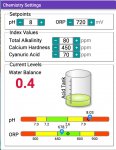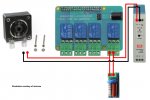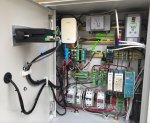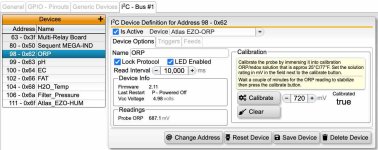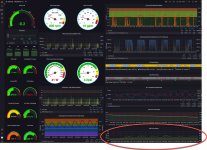Okay, bet you all thought that this thread was "dead", but not so much lol. It's only just because I've been around the world first to finally be able to end up next door on this project. 
I'm just about ready to pull the plug on the IntellipH I think and control acid dosing via REM/nodejs-poolController-dashPanel, and while utilizing a Sequent MicroSystems 10A/240V 4-relay card. Dosing will occur based on pH readings obtained via the Atlas Scientific Industrial pH sensor/probe. Real-time acid tank level monitoring will occur by utilizing REM's new Tank Level Metering feature. (more details to follow in a different thread). No more need looking for a tank level sensor now.


Just a question or two before I proceed.
1. @cmc0619 or @Katodude (coz you guys know my setup). Would it be okay to obtain the 24VDC needed to power the peristaltic pump, from the same 24VDC PSU that is currently providing power to the Sequent MEGA-IND Automation and 4-relay cards? I would assume so, but like the saying goes. The one question you don't ask is the one that will cause you the most grief.
2. I would also assume that the following diagram (hey, I'm not an artist like @jonpcar is ), illustrates the correct method in which to do this right? Again, just want to make sure I'm "on track" here before I go connecting wires. (smoke coming from my new automation panel would be a very bad thing).
), illustrates the correct method in which to do this right? Again, just want to make sure I'm "on track" here before I go connecting wires. (smoke coming from my new automation panel would be a very bad thing).
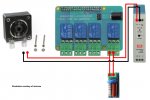
Thanks all...
r.
EDIT: @Dirk ... My IpH controller panel may be available sooner than I thought, if this all plays out the way I hope it will.
I'm just about ready to pull the plug on the IntellipH I think and control acid dosing via REM/nodejs-poolController-dashPanel, and while utilizing a Sequent MicroSystems 10A/240V 4-relay card. Dosing will occur based on pH readings obtained via the Atlas Scientific Industrial pH sensor/probe. Real-time acid tank level monitoring will occur by utilizing REM's new Tank Level Metering feature. (more details to follow in a different thread). No more need looking for a tank level sensor now.

Just a question or two before I proceed.
1. @cmc0619 or @Katodude (coz you guys know my setup). Would it be okay to obtain the 24VDC needed to power the peristaltic pump, from the same 24VDC PSU that is currently providing power to the Sequent MEGA-IND Automation and 4-relay cards? I would assume so, but like the saying goes. The one question you don't ask is the one that will cause you the most grief.
2. I would also assume that the following diagram (hey, I'm not an artist like @jonpcar is

Thanks all...
r.
EDIT: @Dirk ... My IpH controller panel may be available sooner than I thought, if this all plays out the way I hope it will.
Attachments
Last edited:


